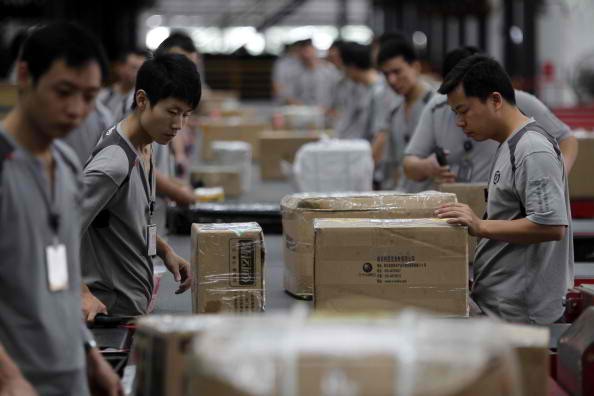China is now home to individuals who would more likely shop online than in any other country, per a survey conducted by the Belgium-based International Post Corporation (IPC). The survey reveals than 36 percent of Chinese nationals do their shopping online at least once a week.
Cross-border shoppers seem to prefer China as their shopping market, as the IPC survey accounts the mainland for 26 percent of current cross-border transactions, trailed by the U.S. (16 percent), and Germany and the U.K. (both at 15 percent), China Daily reported.
The IPC survey elaborated that younger and women shoppers find greater solace shopping in China than anywhere else, with two of e-commerce giant Alibaba's websites, Alibaba.com and AliExpress, having a much younger demographic compared to U.S. rival eBay, which is popular among shoppers aged 35-54.
Apart from eBay and another U.S. counterpart Amazon, Alibaba figures as among the websites most sought-after by online shoppers from around the world, with the three companies collectively making up two-thirds of cross-border purchases around the world.
Cross-border purchases, per the IPC survey, has been dominated worldwide by these four categories: footwear (33 percent), electronics (21 percent), books and other media materials (14 percent), and health and beauty products (13 percent).
Chinese online shopping is clearly dominant in the realm of cross-border purchases: the IPC survey unsurprisingly names China as a preferred market by most European countries, while the same, jointly with the U.S., also applies to cross-border shoppers from Asia-Pacific countries and Canada.
Moreover, free shipping is prevalent among cross-border purchases, with Chinese consumers themselves being a large beneficiary as the survey showed that 78 percent of mainland purchases contained in parcels have been delivered for free.
Armstrong & Associates, a logistics consultancy, estimates that China makes up around 20 percent of the world's $9 trillion global logistics sector at $2.2 trillion, with the e-commerce segment, set to grow at a much faster pace, making up $43.5 billion.



























